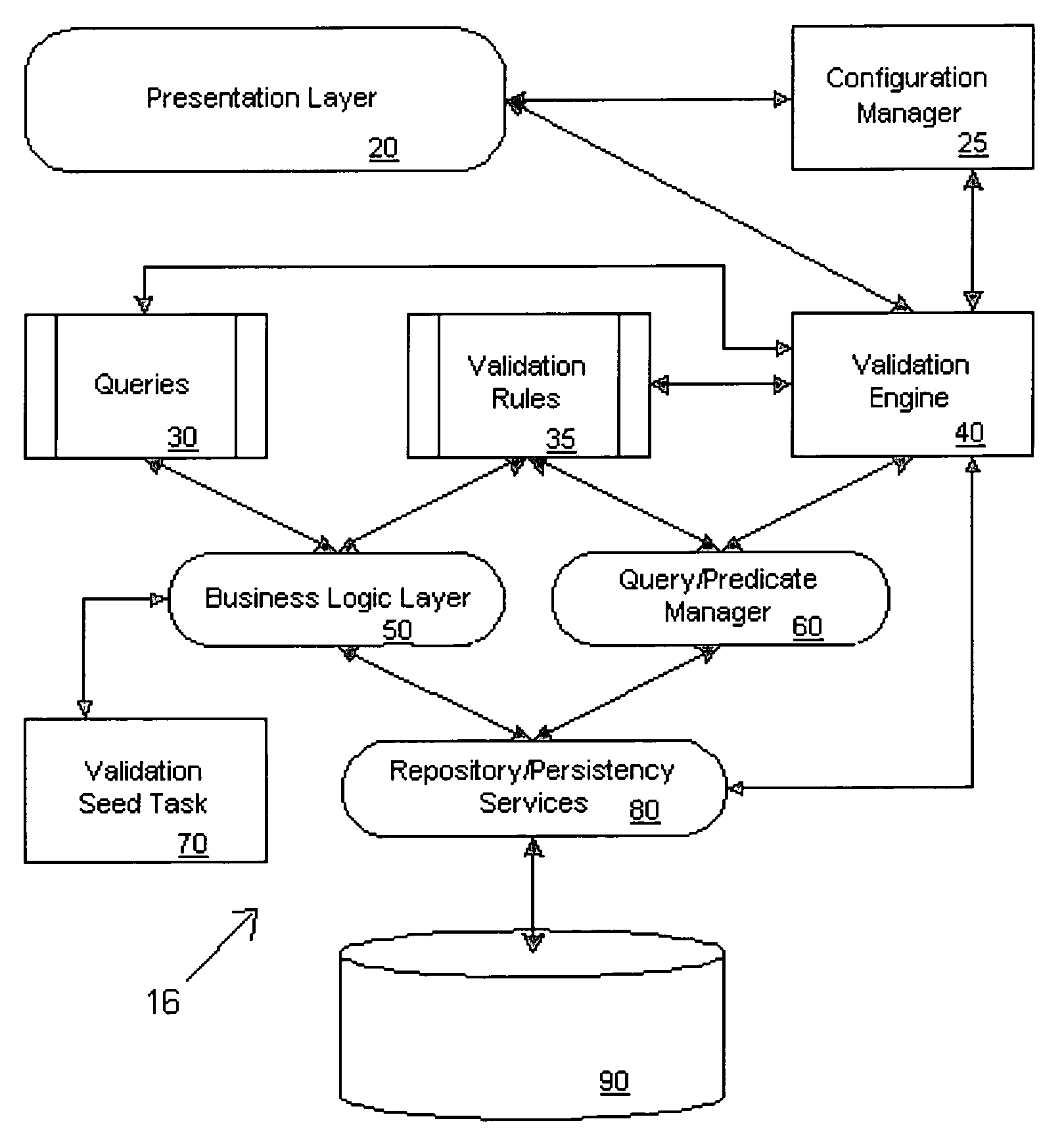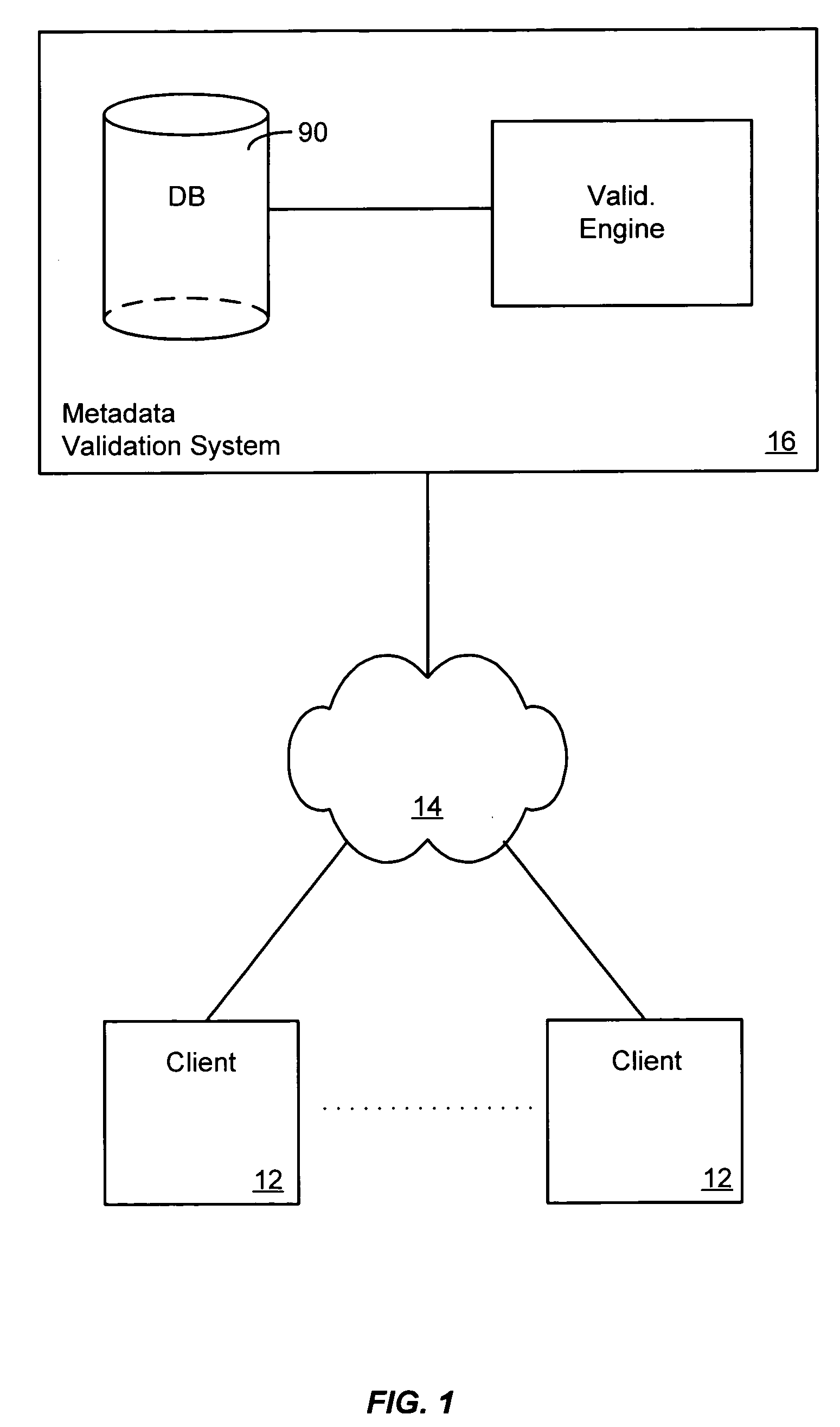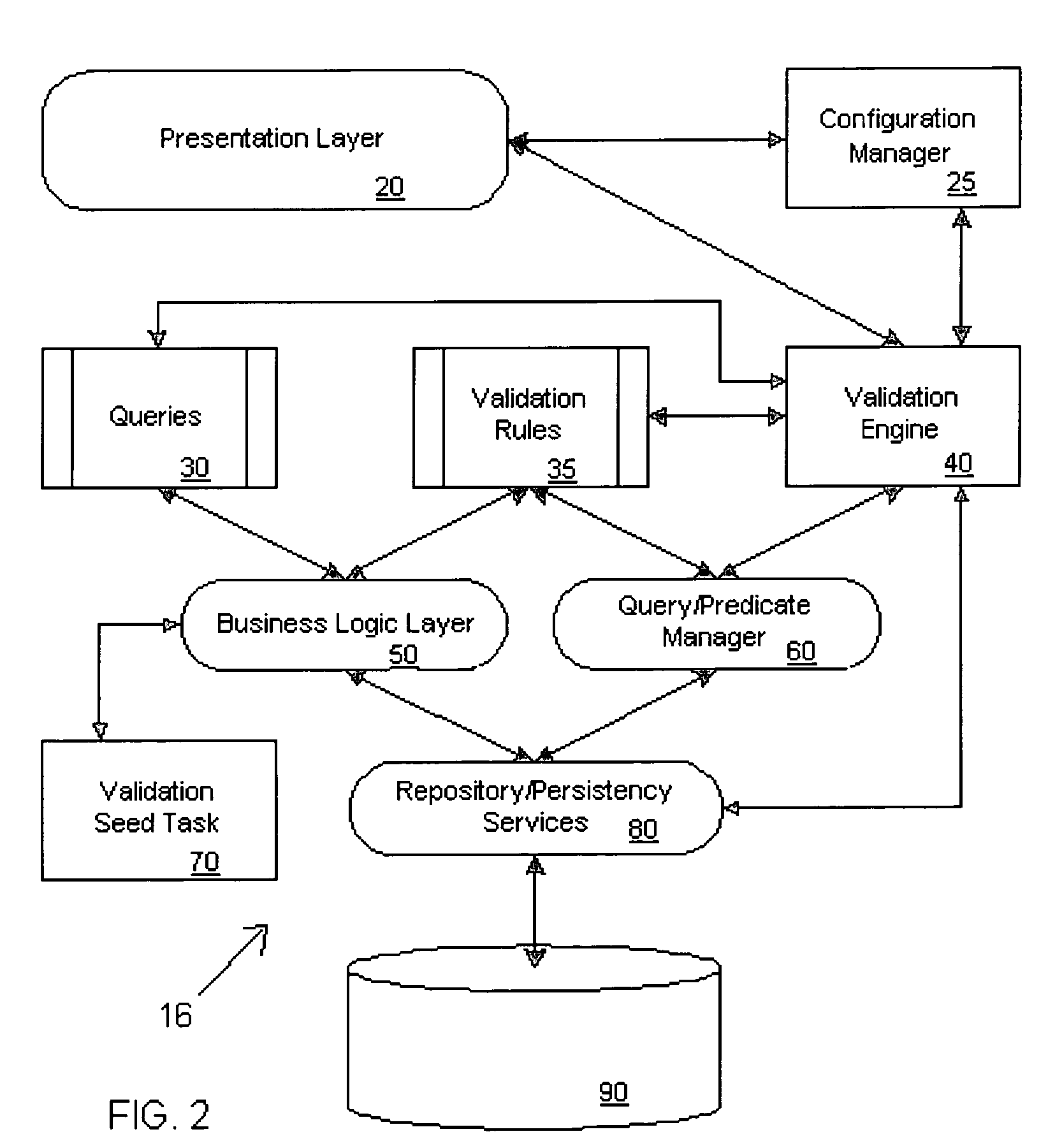Systems and methods for validating objects models
- Summary
- Abstract
- Description
- Claims
- Application Information
AI Technical Summary
Benefits of technology
Problems solved by technology
Method used
Image
Examples
Embodiment Construction
[0020] According to the present invention, systems and methods are provided for implementing metadata validation. Metadata validation is the validation of metadata in a data repository, such as a database. A metadata validation framework provides a means for performing metadata validation on a given subject within a specified context.
[0021] General Definitions and Concepts
[0022] The subject of metadata validation is the meta metadata object on which a validation rule is defined. In general, the following terms are used herein to describe meta metadata objects: MetaClass, MetaCollection, MetaAttribute, MetaAssociation, MetaAssociationEnd. A MetaClass is an object used to represent a model class. A MetaCollection is a concept used to represent a collection of MetaClass objects. A MetaAttribute is an object used to represent a single attribute of a MetaClass object. A MetaAssociation is an object used to represent an association between two MetaClass objects. A MetaAssociationEnd is ...
PUM
 Login to View More
Login to View More Abstract
Description
Claims
Application Information
 Login to View More
Login to View More - R&D
- Intellectual Property
- Life Sciences
- Materials
- Tech Scout
- Unparalleled Data Quality
- Higher Quality Content
- 60% Fewer Hallucinations
Browse by: Latest US Patents, China's latest patents, Technical Efficacy Thesaurus, Application Domain, Technology Topic, Popular Technical Reports.
© 2025 PatSnap. All rights reserved.Legal|Privacy policy|Modern Slavery Act Transparency Statement|Sitemap|About US| Contact US: help@patsnap.com



